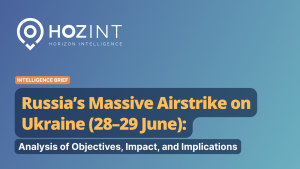Key points
- Since 1 September 2025, U.S. forces have conducted at least 21 lethal strikes on suspected drug-trafficking vessels across the Caribbean and Eastern Pacific, causing 80+ fatalities and two detainees; the campaign has expanded from the Caribbean to the Pacific and continues as of mid-November.
- The shift from law-enforcement interdictions (e.g., JIATF-South/Operation Martillo) to military airstrikes has triggered significant legal and diplomatic pushback, including from UN human rights officials and U.S. lawmakers, who question the use-of-force basis on the high seas.
- Trafficking networks with maritime reach (e.g., ELN corridors in Colombia’s Chocó/Tumaco; Venezuelan-linked criminal nodes such as Tren de Aragua) are likely to adapt by dispersing, masking, or rerouting low-profile vessels (LPVs), raising misidentification risks for legitimate small craft.
- Aviation safety impacts are indirect but real: expanded over-water strike boxes, dynamic restricted areas, and low-altitude maritime patrol sorties require vigilant NOTAM review, ATC coordination, and deconfliction for civil operators in adjacent FIRs. (See “Aviation security” below.)
- Short-term: elevated encounter risk for commercial shipping, offshore energy, fishing, and yachting near interdiction arcs; medium-term: trafficker displacement effects toward more remote Pacific lanes and greater use of stateless LPVs and decoys.
Event description
What: A U.S. campaign of lethal interdictions—primarily precision airstrikes—against boats suspected of narcotics smuggling; detainees from at least one strike were repatriated to regional states.
Who: U.S. military elements under a named mission (reported as Southern Spear) executing strikes; targets alleged to include “narcoterrorist” crews linked to groups like Tren de Aragua and Colombia’s ELN.
Where: International waters in the Caribbean Sea and the Eastern Pacific drug corridors.
When: Beginning 1 September 2025, continuing through mid-November 2025.
Why (stated): To disrupt maritime drug flows to the U.S., reframing some traffickers as “terrorists” to justify military force; contested under international human rights and maritime law.
How: Intelligence-led detection, classification, and engagement of high-speed or low-profile vessels; effects include total loss of craft and crews, with limited survivors.
Analysis
Security
The campaign alters the risk calculus at sea from arrest-centric interdictions to force-on-target events. While Washington argues necessity/self-defense and a terrorism framing, human-rights and law-of-the-sea critiques stress last-resort thresholds and proportionality, noting that UNCLOS and anti-drug conventions enable visit/board/seizure of stateless or consenting flag vessels but do not broadly authorize lethal effects absent imminent threat. Expect continued legal contestation and pressure on partners to withhold basing, overflight, or intelligence support for lethal missions.
On the threat side, groups with hybrid criminal-insurgent profiles exploit maritime corridors. ELN influence around Chocó/Tumaco (Pacific) and coercive “armed strikes” to secure trafficking routes demonstrate capacity and intent to contest state presence; Venezuelan-linked Tren de Aragua nodes facilitate cross-border logistics. These networks will likely adapt via nighttime runs, emissions control (AIS-off), and decoys, complicating discrimination between illicit pangas and legitimate artisanal fishers.
Operational risks extend to collateral harm, wrongful engagements, and search-and-rescue (SAR) obligations after strikes. Misidentification risk rises in congested littorals (e.g., off Venezuela/Colombia or near the Galápagos approaches), especially where fishing fleets and traffickers share sea lanes. Third-party actors (private security, survey vessels) may face coercive encounters or check-stops by state and non-state actors reacting to the campaign.
Maritime security
Compared with long-running Operation Martillo/JIATF-South interdictions, the new approach trades seizures and prosecutions for kinetic denial. That can yield short-term disruption yet risks geographic displacement into more remote, fuel-rich Pacific arcs and tactical innovation (use of semi-submersibles, cargo swaps near EEZ seams, mother-ship tactics). Commercial masters should expect:
- Dynamic hazard areas and On-Scene Commander (OSC) control zones during contacts/strikes; obey hails, reduce speed, and maintain CPA.
- Heightened inspections at regional port calls following proximity to incidents; keep ship’s log, VDR, and AIS archives ready to demonstrate lawful conduct.
- Potential retaliatory harassment by non-state actors along contested coasts (theft, boarding attempts).
Best practices include continuous AIS, recorded bridge audio, redundant nav lights/IR strobes at night, and pre-planned comms trees with RCC/flag state.
Aviation security
The maritime campaign has knock-on effects for civil aviation without directly targeting it:
- Airspace deconfliction: Over-water strike boxes and surveillance stacks (MPA, UAVs, tankers) require strict adherence to NOTAMs and route amendments in adjacent FIRs (e.g., Maiquetía/CCS, Curaçao/AN, Panama/MPZ, Guayaquil/SEFG). Operators should plan fuel for last-minute reroutes over the Caribbean and Eastern Pacific.
- Low-level traffic density: Increased maritime patrol activity at low altitudes raises mid-air and wake-turbulence concerns for helicopters supporting offshore/energy and for GA overwater flights; maintain transponder use and ATC flight following.
- Post-strike SAR airspace: Temporary restrictions for SAR/forensics can delay HEMS/offshore rotations.
Disruptions & travel advice
- Commercial shipping & offshore: Avoid clustering near suspect craft; increase visual/radar lookout in known smuggling lanes. If witnessing a contact/engagement, do not film/broadcast in real time (OPSEC concerns) and follow OSC instructions. Keep a SAR kit ready but do not attempt recovery without authorization post-strike.
- Fishing & yachting: File float plans, keep AIS active, answer VHF-16 hails promptly, use high-vis markings at night, and carry identity/permit documents to mitigate misidentification.
- Civil aviation: Dispatch should scrub NOTAMs for maritime danger/restricted areas and coordinate alt-routes; crews should anticipate ATC reroutes and query FIRs for military activity along coastal airways.
- Corporate travel (coastal cities/ports): Expect episodic protests, diplomatic frictions, and tighter port/airport screening when strikes spike, especially around Venezuela/Colombia littorals.
Forecast
Near term (0–3 months): The tempo likely persists while legal challenges and congressional constraints remain inconclusive. Expect incremental expansion of strike geometry into Eastern Pacific corridors and continued high-visibility announcements after engagements. Retaliatory threats against U.S. assets are more likely at sea than against civil aviation.
Medium term (3–12 months): Traffickers will adapt, with more stateless LPVs/semi-subs, rendezvous beyond typical patrol arcs, and coercive control of littoral populations to secure logistics (a pattern already visible in ELN-held corridors). This increases ambiguity and civilian-craft exposure—raising the operational and reputational cost of lethal interdictions. Regional partners may withhold deeper cooperation, reverting to law-enforcement-led interdictions (Martillo-style) as the sustainable baseline.




